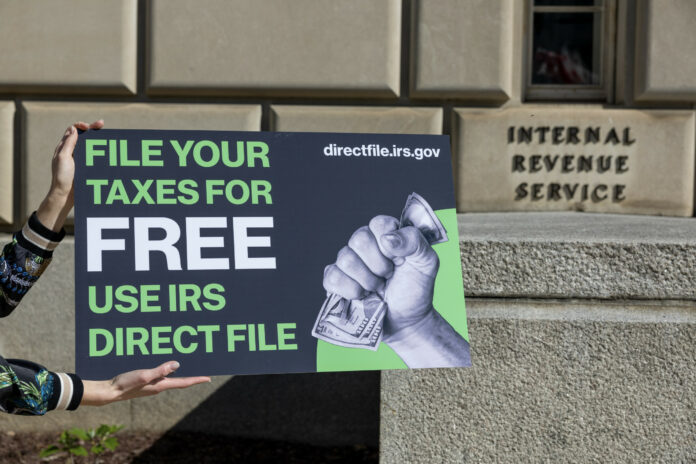Taxpayers may be in store for a brutal hit to their wallets if they don’t use the IRS Tax Withholding Estimator, the federal agency warned today.
Americans often are forced to pay “surprise fees” when their tax refund from the year before was too large or withheld the incorrect amount from their income.
But with the IRS Tax Withholding Estimator, you can guarantee you’re withholding the right amount from your pay in 2024. The tool allows employees and retirees along with self-employed workers to adjust the amount of income tax withheld from their wages so they don’t have any surprise results next year.
Traditionally, withholding refers to the federal income tax amount deducted from your paycheck. If employees find the estimator says the amount is off, they can fill out a new W-4 form and guarantee the correct amount is withheld so they don’t get a surprise tax bill or penalty when filing.
Tasos Katopodis/Getty Images for Economic Security Project
“The Tax Withholding Estimator will help taxpayers avoid unwanted results in 2024 if the refund for their 2023 return was too large, too small or if they received a surprise tax amount due,” the IRS said on its website Wednesday.
They can also better decide whether to reduce their tax withholding initially and increase their take-home pay. This can lower your tax refund but give you more money to spend throughout the year.
The IRS recommends taxpayers review the withholding estimator yearly, so those who just filed may want to take the opportunity to do so now. If you’ve recently gotten married, divorced, purchased a home or had a child, that’s also an important time to review your finances.
“The IRS has provided it as the most accurate tool to find out the best estimate of what you will owe based on the information you provide,” Alex Beene, financial literacy instructor at the University of Tennessee at Martin, told Newsweek. “This is pivotal, especially for those who have income they need withholding to apply to throughout the tax year. No one wants to get to the end of the year with a massive tax bill.”
Kevin Thompson, finance expert and founder/CEO of 9i Capital Group, said this often happens to higher-income joint filers who claim zero for withholdings.
“The last thing you want is to finalize your taxes and see that comma in the tax column showing you owe money,” Thompson told Newsweek. “That is never a good outcome during the tax year.”
The calculator tool launched in 2019 as the IRS sought to improve its service quality. The federal agency also looked to boost its phone call volume and clear out its backlog of 1.9 million paper tax returns.
The IRS has since also opened up its Free File and Direct File pilot programs, allowing taxpayers to avoid the extra costs associated with filing their taxes with an accountant.
To use the IRS Tax Withholding Estimator tool, you’ll need your most recent pay statements as well as your spouse’s, if married. You’ll also need information regarding your other sources of income and your most recent income tax return.
Not withholding the proper amount from your income could become an increasingly common problem, as the IRS has raised many tax brackets and deductions by over 5 percent, finance expert Michael Ryan, who runs michaelryanmoney.com, said.
“If you received a substantial pay raise due to inflation, you might end up owing a large tax bill when you file your return,” Ryan told Newsweek. “To make matters worse, you could be potentially facing penalties and interest charges from the IRS. I’ve seen this happen to clients and they ended up with an unpleasant surprise.”
Uncommon Knowledge
Newsweek is committed to challenging conventional wisdom and finding connections in the search for common ground.
Newsweek is committed to challenging conventional wisdom and finding connections in the search for common ground.


